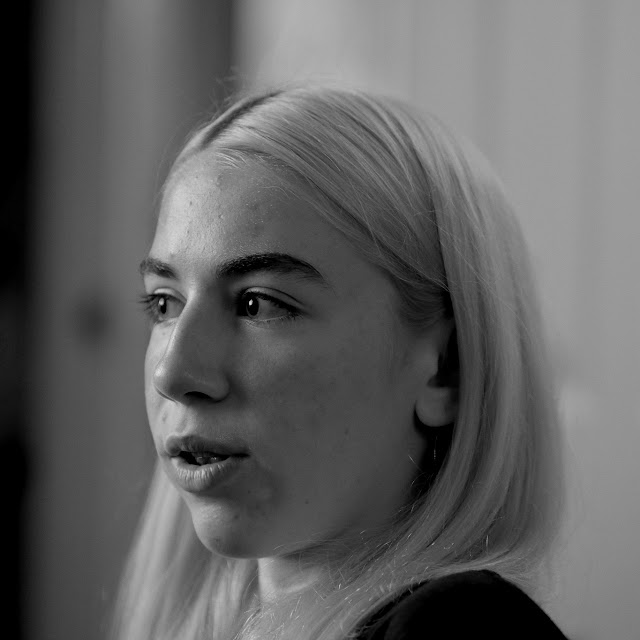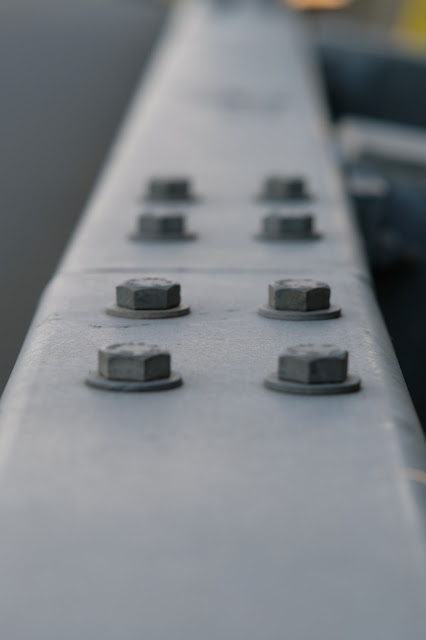In this times of uncertainty, photography has taken a backseat as I deal with the new normal. However nothing lasts forever and how better to recover some enthusiasm than a bit of retail therapy.
Yes guys and gals, I have bought a new lens. Its one I have had my eye on for a while, and as usual I got it through a bit of ebay sniping.
So what new piece of shiny have I bought and why? Before we go into that lets me just unleash a minor piece of annoyance with my camera make of choice, Fuji.
While generally I am very happy with my Fuji kit, their bitter adherence to a specific philosophy can often be irritating. One of these is their attitude to allowing 3rd party lens manufacturers access to the Fuji X-Mount.
Now don't get me wrong, Fuji makes some very good lenses, which are often not too badly priced. In fact one of the things that 1st attracted me to the mount was the lens range that seemed to punch above its weight. However things have moved on, and while Nikon and Canon with their history have always had a great range of lenses, Sony has rapidly overtaken Fuji, by both filling out their own lens makeup and at the same time opening up their lens mounts to 3rd parties such as Zeiss and Sigma.
Fuji on the other hand guard their lens protocols avidly meaning that 3rd party lenses manufacturers have not supported the mount, and unless you were happy to have a manual focus mount with no EXIF information, you would have to buy a Fuji lens
I have heard from a number of Fujistas that they they are quite happy with this situation since Fuji lenses are brilliant, optimised for the mount and profit from lens sales are funneled back into keeping the bodies competitive by subsidizing the development costs.
To the former point, I can only say it is bollocks. Firstly it would assume that Zeiss, Sigma, Tamron etc know very little about lens manufacturing, which is clearly not true and secondly you often see 3rd party manufacturers lens beating the equivalent Nikon, Sony own brand, and there is no reason why, say Sigma, could not do the same for Fuji if given the chance.
There is also another point. While Fuji lens lineup covers most areas, there are conspicuous gaps. Fuji long zooms like the 150-600mm do not exist. Basically the best you can get is (it has to be said the rather good) 150-400mm, plus a teleconverter if you want to extend it. There is no rectilinear wide angle, tilt shift, etc. Even where lenses do exist, there are some areas where they are over priced or just poor. Like I said the 150-400mm is a peach of a lens, but it is heavy. Fuji's other mid range zooms, are just not very good and rarely get put on my camera. Same for Fuji macro. There is only one true (1:1) macro lens in the lineup and that costs over a grand.
3rd party manufacturer support would fill in the gaps of the lineup and provide alternatives that were either different, cheaper or better (or maybe all 3).
As to the argument that the Fuji strategy helps subsidise body costs, there maybe some truth there. However it could also be argued that with the lens lineup looking increasingly poor against there competitors, it is actually hurting Fuji by reducing their market share.
A glimmer of light
The main thing holding 3rd party lens manufacturers back is that Fuji will not divulge the interface between lens and body, meaning that in order to make auto focus lens someone would have to reverse engineer the protocol, which is not an easy job to get right. The CEO of Sigma has said that they would love to make Fuji lenses, but the lack of protocol transparency has stopped them.
However recently there has been a glimmer of hope in getting 3rd party Fuji lenses and that is from a Chinese company called Viltrox. They have released a number of lenses for X-mount, and surprisingly they all support autofocus and full EXIF information. Best of all, the price points were very attractive compared to their Fuji equivalent.
However there is no point buying a low priced lens, if it does not perform both physically and optically. To be truthful I had my doubts about whether the hype was just too good, and while they say don't look a gift horse in the mouth, I say not only should you look, but also do a full dental check up, blood test and x-ray too.
However the reviews seemed promising and the price tempting. Not only that, I had a gap in my lens lineup I was itching to fill
85mm is enough for any man
Viltrox make 3 lenses at present for the X-Mount. A 23mm 1.4, a 33mm 1.4 and a 85mm 1.8. I already have the Fuji 23mm and 35mm f2, and while an extra stop would be nice, they were not getting enough use to go to the Fuji faster alternative's, nor did they need alternatives.
However one of issues had with lenses was that the 35mm required me to get close to the subject for good results. Fine for studio portrait work, but not really something I was comfortable for street photography. I wanted something that would allow me step back from the subject, but still allow me to retain the background separation that fast prime would allow.
The closest lens in the Fuji lineup is the 90mm F2, which retails at about £800, which is a lot for a lens which may only use rarely. The Viltrox 85mm at only £320, but it also has an extra stop at F1.8. OK it may not be a sharp as the Fuji at that aperture, but at half the price it was hard to resist. Even better I managed, via fleabay to grab a pristine Mark 2 version for £240. You can buy a lot of extra lenses for that £640 saving.
So was it worth it, or was is £250 down the drain?
Proof in the usage
 |
| Size comparison with the Fuji 35mm F2.0 (and a box) |
I have never really understood unboxing videos, so I won't bore you. Personally I wouldn't really care if lenses came wrapped in a piece of bubble wrap with gaffer tape around it. It is enough to say that teh lens came in a nice box and even came with small bag to put the lens in (or lose as is my want).
The lens itself certainly feels solid and has a lovely lens with a huge 72mm filter mount size. It is also very minimalist with no controls or aperture ring of any type breaking up its lines. Of course the lens has no stabilization, which for a lens this size could create issues on a non-stabilized camera, but the lack of aperture ring is a bit jarring. Fuji cameras are built around the idea of manual controls, and while the front camera dial is quite capable of controlling the lens aperture, it is not as intutive. as the manual version. It also meant that I had to continually check whether the lens was in auto-aperture mode via the viewfinder.
The lens has features large sunshade. Unfortunately this does get in the way of the large manual focus ring and on my version, I found removing it was a bit tough, but hopefully this would get better with wear.
Hocus Pocus/Autofocus
Putting a non Fuji lens on a camera and expect it to autofocus just feels wrong. But focus it did, and very smoothly too.
The 1st thing you notice is the minimum focus distance is quite long at 75cm (or 2 1/2 feet in old money), but outside that distance, things work smoothly and snaps onto objects like any other Fuji lens.
The lens itself is quite heavy, but never made my XT-2 feel particularly unbalanced. It is also quite large, and is probably not something you will carry around all the time, unlike say the 35mm,. However for say street photography where you want a fast focusing lens that separate the subject from the background without having to get in their face, it will do the job (did I mention it cost £250?)
To test the lens I persuaded my supermodel wife (as in she is a super wife and a wonderful model for me) to go for a walk around a local path, where she deigned to pose for me. Certainly I had no problems getting clear and sharp results with some nice bokeh and separation.To do this I found I had to step back quite a bit, but that was the whole point.
I also used the narrow field of view to take images which showed depth of field. In all these the auto focus was smooth and accurate, even face detect worked a treat. Colours came out nicely, and despite the lens not benefiting from Fuji in camera processing, I could see very little distortion.
My only issue came when I tried to take some pictures of people walking on the street. A number were out of focus, and I can only put this down to that it is large unstabilised lens on a unstabilised body. It is is easy to forget this and let the shutter speed creep down to about 1/125 where camera shake may showing up.
The lens also made a reasonable nature lens, despite it long minimum distancing. This points to another use of this lens. Combine it with a macro extension such as the MCEX-16 and you have a good value autofocus macro lens for the money
Conclusion
There is very little to hate about this lens, and for the price makes it a bargain that really should be in everyone's kit bag. I cannot compare it with the Fuji 90mm, but it is hard to see how any quality improvement could be anything other than marginal.
Like any prime lens, its usage will be limited, but it does everything it says on the tin, and I can not be more happy with it. If I had one criticism, a aperture dial would of been nice, but this is just nitpicking.
More importantly Viltrox has shown it is quite possible to create valid 3rd party autofocus lens for Fuji. Hopefully other lens manufacturers will start do similar, and the range of available glass for Fuji bodies will increase. This can only be good for the long term survival of the Fuji camera brand.
Some sample images...
 |
| F2.2 ISO 200 |
 |
| F1.8 ISO 200 |
 |
| F2.2 ISO 200 |
 |
| F3.6 ISO 200 |
 |
| F1.8 ISO200 |
 |
| F1.8 ISO 250 |
 |
| F1.8 ISO 200 |
 |
| Taken just as a P-51 Mustang flew over. Not sure this lens makes a great airshow lens, but it does show how sharp it is |
 |
| F1.8 ISO 1600 |













